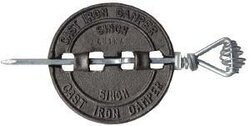Got a new lopi liberty a couple months ago and had some small fires with no issues, now that I've had it going 24 hours I can't seem to keep it from over firing.
I know I have a great draft, house is new construction built for a wood stove, very long pipe all the way up.
I'll load splits on to get a long burn, (silver maple cause that's all that grows on my property). Once it gets flames going I turn on the bypass (liberty has a bypass and an air control) Once I see it won't go out I back off the air, recently all the way. It takes a while but eventually it will get crazy. I have a thermometer on the pipe, and one on the stove top. The pipe never gets above 400, but the stove top will get up to 800 (overfire according to the manual) Since the air is already all the way off I have to close the bypass to try to let some heat out. That heats up the pipe up to like 600 and cools the stove back around 700. I have to keep doing this until it is all coals.
I've checked the gasket with a dollar bill, very tight. Is there a way to further reduce the air the air control lets in on a liberty?
I know I have a great draft, house is new construction built for a wood stove, very long pipe all the way up.
I'll load splits on to get a long burn, (silver maple cause that's all that grows on my property). Once it gets flames going I turn on the bypass (liberty has a bypass and an air control) Once I see it won't go out I back off the air, recently all the way. It takes a while but eventually it will get crazy. I have a thermometer on the pipe, and one on the stove top. The pipe never gets above 400, but the stove top will get up to 800 (overfire according to the manual) Since the air is already all the way off I have to close the bypass to try to let some heat out. That heats up the pipe up to like 600 and cools the stove back around 700. I have to keep doing this until it is all coals.
I've checked the gasket with a dollar bill, very tight. Is there a way to further reduce the air the air control lets in on a liberty?



